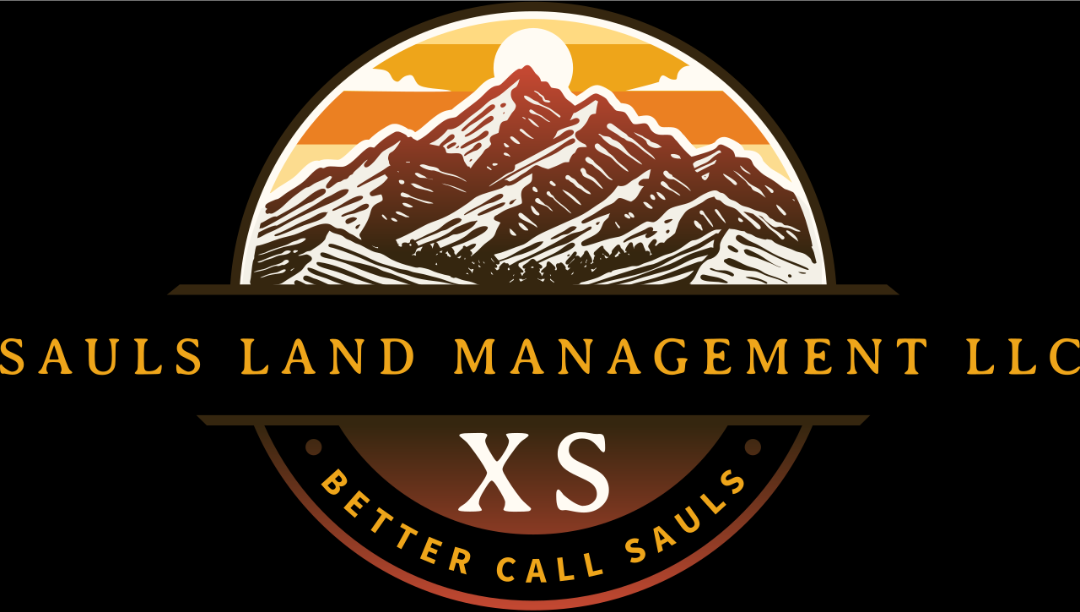Spring is the perfect season in Sevierville, TN to give your trees a fresh start. With warmer weather and new growth on the way, many homeowners head out with clippers and saws in hand, ready to tackle overgrown branches. While a little pruning can go a long way, doing it the wrong way can harm your trees more than help them. Tree trimming may look simple, but without proper technique, you could be setting your trees up for stress, disease—or even a shorter lifespan.
Before you start trimming, make sure you’re avoiding these common DIY mistakes. At Saul’s Land Management LLC, we’ve seen it all—and we’re here to help your landscape thrive the right way.
Table of Contents
Topping Your Trees: A Shortcut That Can Kill
One of the biggest (and most damaging) mistakes homeowners make is tree topping—a process where the upper branches are cut straight across to reduce height.
Why topping is harmful:
- It destroys the natural shape of the tree.
- It leaves large, open wounds that invite disease and pests.
- It leads to weak, fast-growing shoots that are more likely to break.
Trees that are topped often respond with a burst of unstable growth that compromises the tree’s structure and health. If you’re concerned about the height or size of a tree, crown thinning or crown reduction is a much safer and healthier method. These techniques require expertise and precision, which is where Saul’s Land Management can step in to help.
Cutting Too Close to the Trunk: Don’t Wound the Heart of the Tree
Another common error is making pruning cuts too close to the main trunk, often referred to as “flush cuts.” While it may look clean, this actually removes the branch collar—the swollen area at the base of the branch that helps a tree heal naturally.
What happens when you cut too close:
- The tree can’t properly seal the wound, leaving it vulnerable to rot.
- Infections can spread directly into the trunk.
- Structural strength is compromised.
Instead, always cut just outside the branch collar, angling slightly downward and away from the trunk. This allows the tree to heal efficiently and reduces the chance of long-term damage.
Trimming at the Wrong Time of Day: Timing Matters
Many homeowners trim their trees in the heat of the afternoon when they’re off work. But this is not ideal for tree health.
Here’s why early morning is best:
- Cooler temperatures reduce water loss and stress on the tree.
- Sap flow is lower in the morning, helping minimize “bleeding” from certain species like maples or birches.
- Avoiding peak heat protects your tools (and yourself) from overheating.
Even more important than the time of day is choosing the right time of season. While spring is generally safe for trimming, some species should be pruned during dormancy or late summer to avoid disease spread—especially oaks and elms.
Over-Pruning: Less Is More
Many DIY trimmers go overboard, thinking that removing a lot of branches will encourage better growth. But excessive pruning (removing more than 25% of a tree’s canopy) can:
- Weaken the tree’s ability to produce energy
- Make it more susceptible to pests and disease
- Cause sunscald by exposing inner limbs to sudden heat
Stick to removing dead, damaged, or crossing branches, and save major pruning for trained professionals who know how to balance aesthetics and tree health.
Using Dull or Dirty Tools
This one’s simple but often overlooked. Trimming your tree with dull or dirty tools can cause ragged cuts that don’t heal well—and worse, they can spread disease between trees.
To avoid this:
- Always sharpen blades before trimming.
- Disinfect tools with a mix of water and bleach or rubbing alcohol between uses, especially when working on diseased limbs.
- Use the right tools for the job: hand pruners for small branches, loppers for medium branches, and a saw for larger limbs.
Let Saul’s Land Management Do the Hard Work
If you’ve made one of these mistakes in the past—don’t worry. Trees are resilient, and with the right care, they can bounce back. But if you’re unsure about what to cut, when to cut, or how to do it safely, it’s best to leave it to professionals.
At Saul’s Land Management LLC, we specialize in expert tree trimming, crown shaping, disease prevention, and tree removal across Sevierville and surrounding areas. We’ll assess the health and structure of your trees and trim them safely to promote strength, shape, and beauty.
Need a spring tree checkup or ready to schedule a pruning service?
Call us at (865) 280-0428 or visit https://saulslandmanagementllc.com/ to request your free consultation. Keep your trees strong, safe, and stunning this season.

